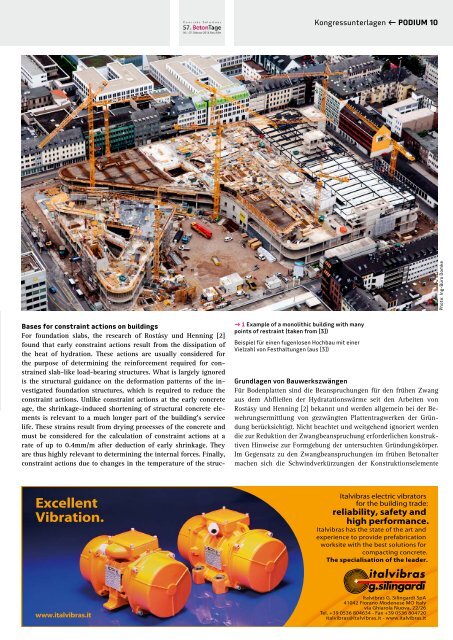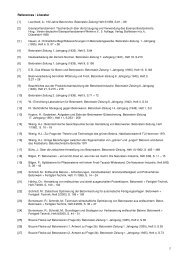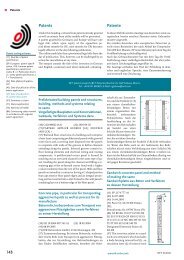KONGRESSUNTERLAGEN | PROCEEDINGS - Bft-international.com
KONGRESSUNTERLAGEN | PROCEEDINGS - Bft-international.com
KONGRESSUNTERLAGEN | PROCEEDINGS - Bft-international.com
Erfolgreiche ePaper selbst erstellen
Machen Sie aus Ihren PDF Publikationen ein blätterbares Flipbook mit unserer einzigartigen Google optimierten e-Paper Software.
Kongressunterlagen ← PODIUM 10<br />
Photo: Ing-Büro Domke<br />
Bases for constraint actions on buildings<br />
For foundation slabs, the research of Rostásy und Henning [2]<br />
found that early constraint actions result from the dissipation of<br />
the heat of hydration. These actions are usually considered for<br />
the purpose of determining the reinforcement required for constrained<br />
slab-like load-bearing structures. What is largely ignored<br />
is the structural guidance on the deformation patterns of the investigated<br />
foundation structures, which is required to reduce the<br />
constraint actions. Unlike constraint actions at the early concrete<br />
age, the shrinkage-induced shortening of structural concrete elements<br />
is relevant to a much longer part of the building’s service<br />
life. These strains result from drying processes of the concrete and<br />
must be considered for the calculation of constraint actions at a<br />
rate of up to 0.4mm/m after deduction of early shrinkage. They<br />
are thus highly relevant to determining the internal forces. Finally,<br />
constraint actions due to changes in the temperature of the struc-<br />
→ 1 Example of a monolithic building with many<br />
points of restraint (taken from [3])<br />
Beispiel für einen fugenlosen Hochbau mit einer<br />
Vielzahl von Festhaltungen (aus [3])<br />
Grundlagen von Bauwerkszwängen<br />
Für Bodenplatten sind die Beanspruchungen für den frühen Zwang<br />
aus dem Abfließen der Hydratationswärme seit den Arbeiten von<br />
Rostásy und Henning [2] bekannt und werden allgemein bei der Bewehrungsermittlung<br />
von gezwängten Plattentragwerken der Gründung<br />
berücksichtigt. Nicht beachtet und weitgehend ignoriert werden<br />
die zur Reduktion der Zwangbeanspruchung erforderlichen konstruktiven<br />
Hinweise zur Formgebung der untersuchten Gründungskörper.<br />
Im Gegensatz zu den Zwangbeanspruchungen im frühen Betonalter<br />
machen sich die Schwindverkürzungen der Konstruktionselemente












